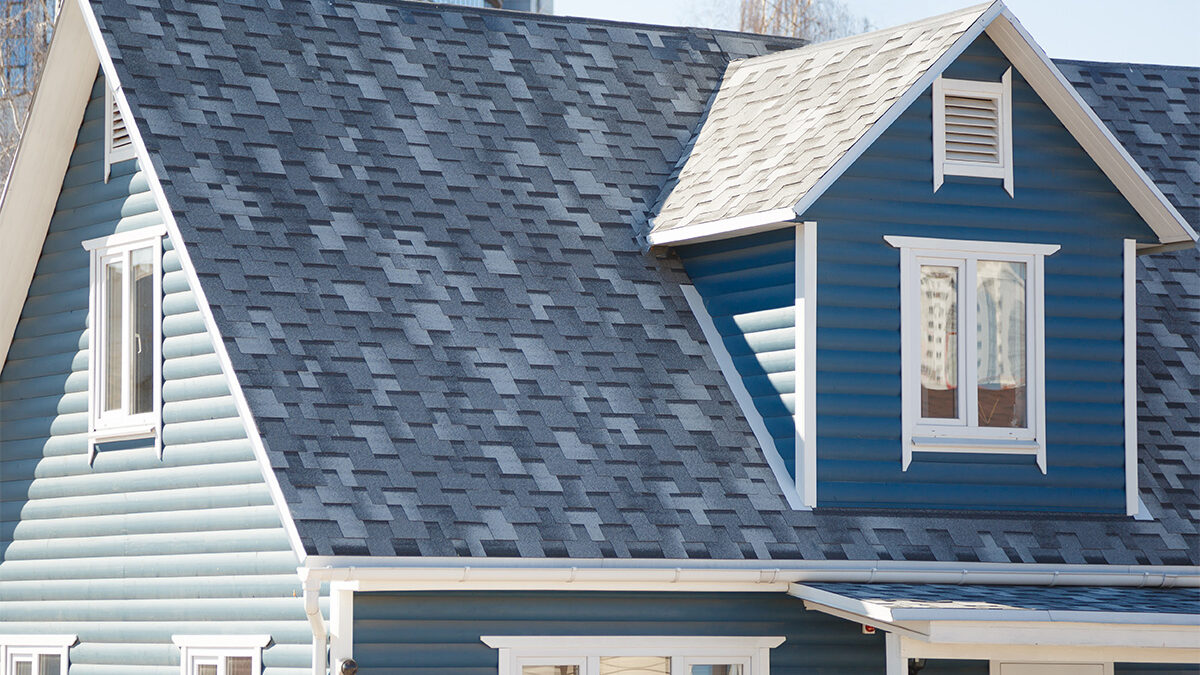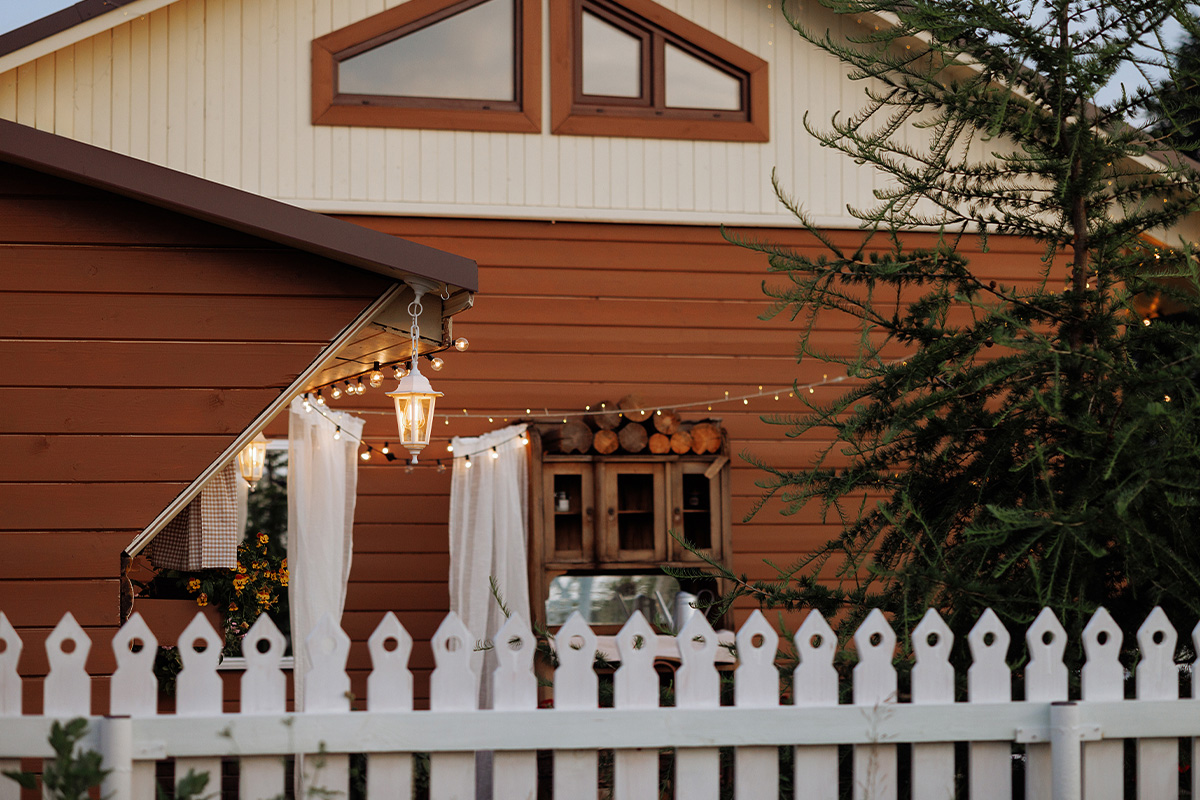
In Wichita, where summer storms and winter ice can test any home’s exterior, your siding choice matters. Beyond curb appeal, the right siding system can significantly impact your energy bills, maintenance requirements, and long-term property value. With material costs and options changing constantly, staying informed helps you make decisions that balance immediate needs with long-term benefits.
This guide serves as your comprehensive resource for understanding home siding in Wichita. We’ll help you navigate material selections, identify when replacement is necessary, and understand the installation process so you can protect your investment with confidence.
Why is Siding Important for My Home?
Quality siding protects your home from rain, snow, wind and sun damage while preventing moisture infiltration that leads to rot and mold. The right siding also improves your home’s insulation, helping you maintain comfortable indoor temperatures year-round and reduce energy costs. This essential exterior component delivers both practical protection and long-term value for your property.

In addition to protection, siding plays a big role in your home’s appearance. Even if a home’s interior is fully modernized and renovated, a dingy exterior significantly lowers its resale value and overall appeal. Choosing the right siding for your home and keeping it in good condition is key to maintaining the appearance and value of your home over time.
Benefits of New Siding for Your Home
Investing in new siding enhances your home’s appearance and provides a broad range of practical benefits that can improve its durability, energy efficiency, and long-term value. Whether you’re looking to boost curb appeal, reduce maintenance, or protect your home from the elements, new siding is a smart upgrade that delivers both aesthetic and function advantages.
- Improved Curb Appeal
- Enhance your home’s curb appeal by giving it a fresh, updated look.
- Higher Resale Value
- Increase your home’s resale value by boosting its appearance, energy efficiency, and overall condition.
- Better Energy Efficiency
- Improve your home’s energy efficiency by providing better insulation and reducing heat loss or gain.
- Enhanced Protection from the Elements
- Shield your home from moisture, wind, sun, and temperature extremes.
- Reduced Maintenance
- Choose a durable, low-care exterior that requires less frequent repairs and upkeep.
- Structural Benefits
- Reinforce your home’s exterior to protect it against damage from weather, pests, and wear over time.
- Improved Sound Insulation
- Improve sound insulation by adding an extra layer of protection that helps reduce noise from the outside.
- Customization & Style Flexibility
- New siding offers customization and style flexibility, allowing you to choose from a variety of colors, textures, and materials to match your home’s aesthetic.
Different Types of Siding Materials

Different home siding materials exist because each one offers unique advantages in terms of durability, maintenance requirements, and cost-effectiveness while providing homeowners with diverse aesthetic options. American Roofing & Construction install many different types of siding, including:
- Vinyl Siding
- Vinyl siding is an affordable, low-maintenance option available in many styles and colors, You can depend on vinyl siding to resist moisture, fading, and pests.
- Aluminum Siding
- Aluminum siding is a lightweight, rust-resistant option that’s low-maintenance, fireproof, and performs well in a variety of climates.
- Fiber Cement Siding
- Fiber cement siding is a durable, low-maintenance material that looks like wood but resists fire, moisture, pests, and harsh weather.
- Natural Wood Siding
- Natural Wood siding offers timeless beauty and charm with a classic look that can be customized through stains or paint.
- Engineered Wood Siding
- Engineered wood siding is a strong, affordable alternative to real wood that offers a natural look with added resistance to moisture and pests.
- Composite Siding
- Composite siding is a durable, low-maintenance material made from a blend of wood fibers and resins that mimics the look of real wood.
- Steel Siding
- Steel siding is a tough, low-maintenance option that resists fire, pests, and harsh weather while giving your home a sleek, modern look.
- Stone and Brick Siding
- Stone and brick siding offers unmatched durability and timeless beauty, giving homes a classic, high-end appearance that lasts for decades.
How Do I Know If I Need New Siding?
Your home’s siding plays a crucial role in protecting it from the elements, so it’s important to keep an eye on its condition. Over time, siding can wear down, and it’s important to be able to know when to replace it.
You may need new siding if you notice cracks, warping, rotting, fading, mold or mildew or if your energy bills are rising due to poor insulation. Other warning signs include loose or missing panels, bubbling or blistering, or peeling paint or wallpaper inside your home-which can indicate moisture is getting through. If your siding is over 20-30 years old, it’s also worth having it inspected, even if there are no obvious issues yet.
Top Signs You Might Need New Siding
Wondering if you should replace your home’s siding? Here are some of the top signs it may be time for an exterior update:
- Your current siding is more than 20-30 years old.
- Repairs are frequent and getting expensive.
- Energy bills are rising despite insulation improvements.
- You’re planning to sell and want better curb appeal.
- Your current siding no longer matches your style or neighborhood upgrades.
- There’s significant water, insect, or structural damage behind the siding.

Check out our article on “5 Signs It’s Time for New Siding” for a step-by-step breakdown on how to recognize damage and when it’s time to replace siding.
Things to Consider Before Choosing New Siding
Choosing the right siding is an important decision for your home’s long-term health. Before making a final choice, we recommend considering factors like location, budget, and home style before making any final decisions. Taking time to consider these factors can help build your confidence in your decision and lead to higher long-term satisfaction with your home’s exterior.
- Climate: Choose a material that can withstand the weather in your area.
- Budget: Factor in both initial cost and long-term maintenance expenses.
- Maintenance Requirements: Determine how much upkeep each siding material needs.
- Style Preferences: Pick a material that complements your home’s design.
- Energy Efficiency: Select a siding option that helps improve insulation and lowers energy bills.
- Durability: Consider how long the material will last and how it holds up over time.
- Structural Condition: Ensure your home’s exterior is in good shape for proper installation.
- HOA Guidelines & City Codes: Check with your homeowner’s association and local building department for any rules, restrictions, or required approvals before starting your siding project.
Commonly Asked Questions About Home Siding

How Do I Prepare to Install New Home Siding?
The process of installing new siding doesn’t have to be stressful. If you feel like you’re stuck wondering where to begin, here are some tips to get started:
- Get quotes from 203 licensed and insured siding contractors.
- Ask about warranties (materials and labor).
- Verify the contractor include flashing, house wrap, and proper moisture barriers.
- Research different siding types to find a material that fits your budget, climate, and aesthetic goals.
- Consider adding insulation or foam-backed siding for energy efficiency.
- Review any HOA or neighborhood style requirements (if applicable).
- Plan to upgrade trim, soffits, or fascia boards if they’re also worn.
- Schedule the install during good weather (spring or fall is ideal in many regions, especially Wichita).
How Do I take Care of My Home’s Siding?
Taking care of your home’s siding helps extend its lifespan and keep your house looking great. Here are some easy things you can do to take care of your home’s siding:
- Keep items like barbecue grills, fire pits, and lawnmowers several yards away from your siding.
- Trim vines, bushes and trees away from siding to prevent moisture and abrasion.
- Clean gutters and downspouts to prevent overflow against siding.
- Destroy any insect or bird nests you see being build on your home’s exterior.
- Power wash or hose off dirt, mold, and mildew (check with a professional before doing this).
- Walk around your home to check the condition of your siding (more on this below).

What Are Siding Problems I Should Look Out For?
Every six months, we recommend you walk around your entire house and closely inspect the condition of your siding.
- Make note of any cracks, warping, or loose panels.
- Check for fading, chalking, or peeling paint.
- Look for signs of mold, mildew, or algae buildup.
- Inspect corners, edges, and joints for gaps or missing caulk.
- Examine siding under roof lines and near gutters for water stains or rot.
- Check for bubbling or bulging spots (could indicate moisture underneath).
- Feel interior walls for drafts or cold spots (could mean poor insulation/sealing).
- Look for signs of insect or rodent damage, especially near the foundation.
If you notice something that doesn’t look right, call a professional right away. At American Roofing & Construction, our experts can inspect your siding and provide you with trustworthy advice.
Trust American Roofing & Construction for Expert Siding Installation in Wichita
Whether you’re replacing worn-out siding or upgrading your home’s exterior with a fresh new look, American Roofing & Construction is here to help. We offer professional siding installation and repair services for homes and businesses across Wichita and the surrounding area. Our team has experience with all types of siding, including vinyl, fiber cement, engineered wood, and more. You can depend on us to help you choose the right option for your needs, budget, and personal style.
Schedule your free quote today and ask us about pairing your new siding with professional exterior painting or other home exterior upgrades.

